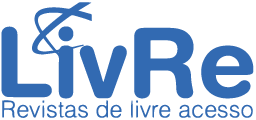Linguagem Controlada entre Português e Chinês
DOI :
https://doi.org/10.30620/pdi.v14n1.p221Mots-clés :
Linguagem controlada. Língua chinesa e língua portuguesa. Tradução.Résumé
No século XX, com a globalização da economia, a crescente migração e o desenvolvimento da tradução automática, o conceito de linguagem controlada surgiu e continuou a expandir-se e aprofundar-se, atraindo ampla atenção de estudiosos da linguística e dos círculos de tradução. Com esse texto, objetivamos fazer uma reflexão sobre a linguagem controlada, destacando sua origem, tipologias e função. Além disso, evidentemente, refletimos brevemente sobre a Linguagem Controlada (LC) no que diz respeito à língua chinesa e à língua portuguesa. Por fim destacamos a relevância de tal estudo, da investigação sobre essa linguagem, considerando a comunicação cada vez mais estreita entre a China e os países de língua portuguesa. Tal linguagem poderá desempenhar um papel importante no domínio da tradução automática, do ensino, da redação de textos para comunicação técnica e no domínio da inteligência artificial, evitando ambiguidades, favorecendo a compreensão, a traduzibilidade.
Téléchargements
Références
Adolphson, E. (1998, May). Writing Instruction and controlled language applications: Panel discussion on standardization. In Proceedings of the Second International Workshop on Controlled Language Applications (CLAW98) (p. 191).
Allen, J. (1999). Adapting the concept of “translation memory” to “authoring memory” for a controlled language writing environment. In Proceedings of Translating and the Computer 21.
Almqvist, I., & Hein, A. S. (2000). A language checker of controlled language and its Integration In a documentation and translation workflow. In Proceedings of Translating and the Computer 22.
Allen, Jeffrey. (1999). Different kinds of Controlled Languages. In TC-Forum magazine, volume 1-99, 4-5.
Allen, J. (2003). Controlled Translation: the Integration of Controlled Language and Machine Translation. Panel session, EAMT/CLAW.
Crabbe, S. (2017). Controlling language In Industry: Controlled languages for technical documents. Palgrave Macmillan. DOI 10.1007/978-3-319-52745-1_1
Cremers, L. (2003). Controlled Language In an Automated Localization Environment. Keynote address at EAMT/CLAW.
Kamprath, C., Adolphson, E., Mitamura, T., & Nyberg, E. (1998, May). Controlled language for multilingual document production: Experience with Caterpillar technical English. In Proceedings of the Second International Workshop on Controlled Language Applications (Vol. 146).
Kathy ,B. et al. (1999). GIFAS Rationalized French: A Controlled Language for Aerospace Documentation In French. Technical Communication, Volume 46 (2), 220-229.
Marrafa, P., Amaro, R., Freire, N., & Mendes, S. (2012). Portuguese controlled language: Coping with ambiguity. In Controlled Natural Language: Third International Workshop, CNL 2012, Zurich, Switzerland, August 29-31, 2012. Proceedings 3 (pp. 152-166). Springer Berlin Heidelberg.
Mitamura, T. (1999, September). Controlled language for multilingual machine translation. In MTSummit, 46-54.
Muegge, Uwe. (2007). Controlled language: The next big thing In translation? ClientSide News Magazine. http://works.bepress.com/uwe_muegge/4.
Nyberg, E. H., & Mitamura, T. (1996, March). Controlled language and knowledge-based machine translation: Principles and practice (pp. 74-83). In Proceedings of the first International workshop on controlled language applications.
Rascu, E. (2006). A controlled language approach to text optimization In technical documentation. Proc. of KONVENS 2006, 107-114.
Spaggiari, L., Beaujard, F., & Cannesson, E. (2003). A controlled language at Airbus (pp. 107–122). In EAMT Workshop: Improving MT through other language technology tools: resources and tools for building MT. http://dx.doi.org/10.1075/li.28.1.09spa
冯全功& 高琳.(2017).基于受控语言的译前编辑对机器翻译的影响. 当代外语研究(02), 63-68+87+110.
胡清平.(2005).机器翻译中的受控语言. 中国科技翻译(03), 24-27. doi:10.16024/j.cnki.issn1002-0489.2005.03.008.
胡清平.(2005).受控语言及其在汉英机器翻译里的应用前景.国际译联第四届亚洲翻译家论坛论文集, 134-141.
袁亦宁.(2003).受控语言:机器翻译的新途径. 上海科技翻译(03), 77-80.
Téléchargements
Publié-e
Comment citer
Numéro
Rubrique
Licence
(c) Tous droits réservés Pontos de Interrogação – Revista de Crítica Cultural 2024

Cette œuvre est protégée sous licence Creative Commons Attribution - Partage dans les Mêmes Conditions 4.0 International.
Autores que publicam nesta revista concordam com o seguinte termo de compromisso:
Assumindo a criação original do texto proposto, declaro conceder à Pontos de Interrogação o direito de primeira publicação, licenciando-o sob a Creative Commons Attribution License, e permitindo sua reprodução em indexadores de conteúdo, bibliotecas virtuais e similares. Em contrapartida, disponho de autorização da revista para assumir contratos adicionais para distribuição não-exclusiva da versão do trabalho publicada, bem como permissão para publicar e distribuí-lo em repositórios ou páginas pessoais após o processo editorial, aumentando, com isso, seu impacto e citação.























